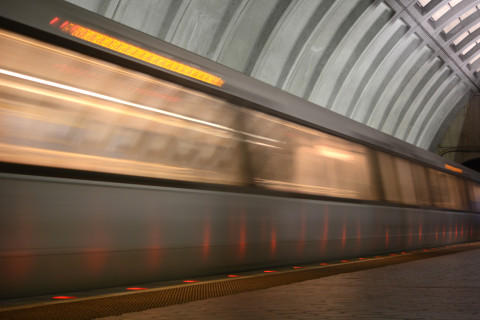WASHINGTON — Trains running red signals and the investigation into a preventable derailment last month are on the agenda as the Metro Board of Directors convenes for a special meeting Thursday morning, which will reveal new details about inspections that have led Metro to overhaul its 24/7 track work program.
Metro Board Chairman D.C. Councilmember Jack Evans called the meeting in the wake of problems including including the Silver Line derailment near East Falls Church and a series of findings from the Federal Transit Administration.
In the first of three reports tied to the FTA’s “safety blitz” earlier this year, the agency found Metro track inspectors and maintenance crews in many cases did not know what they were doing and did not take proper care of the tracks.
The second report addressed problems with trains running red signals in the Metro system, putting riders and workers at risk.
The third report, released Wednesday, identified a “widespread lack of compliance” that allows trains and equipment to roll away when it should be securely stored with handbrakes or other safety measures.
While documents provided just ahead of Thursday’s meeting largely outline existing information about the red signal violations, they do provide more details on last month’s derailment and the new inspections that have followed.
Metro inspected 271 switches at 66 interlockings across the system in the three weeks after last month’s derailment. The interlockings are areas where trains move from one track to another.
The documents to be presented to the Metro Board show one of those interlockings had to be taken out of service immediately after an issue was identified in the new inspection, and five interlockings required new speed restrictions for trains. Metro is still in the process of performing new inspections on curves where tracks can get worn down more quickly than in other parts of the system.
Preliminary findings in the area where the train derailed last month show that the track was not properly inspected, and that problems with the tracks were not properly classified.
Metro records show the automated Track Geometry Vehicle was last fully used at the interlocking in February, with a partial ultrasonic testing done in April. According to the presentation prepared for the Metro Board, one of the two tracks had last been inspected on foot July 27, and the other July 11. The presentation does not indicate whether the area connecting the two tracks where the train derailed was inspected then.
The last “detailed inspection” of the crumbling area of tracks where the train derailed was June 17.
The six-car Silver Line train derailed July 29. The 63 passengers were taken off the train and walked the short distance to the East Falls Church station. Three reported injuries, including one who said he hit his head.
Metro Transit Police have opened a criminal investigation.
Metro has not yet estimated the cost of the damage.
Metro has since met with track inspectors, changed inspection forms and reemphasized the need to regularly inspect interlockings.






